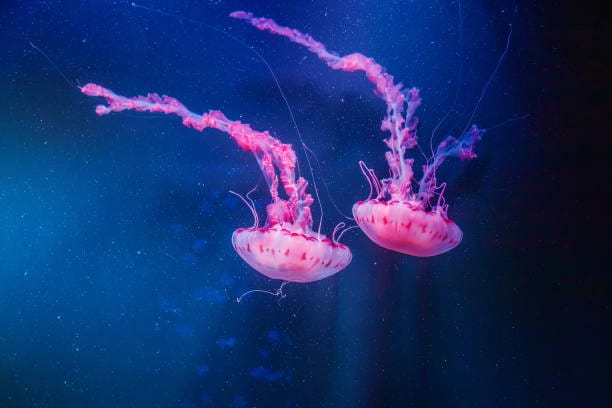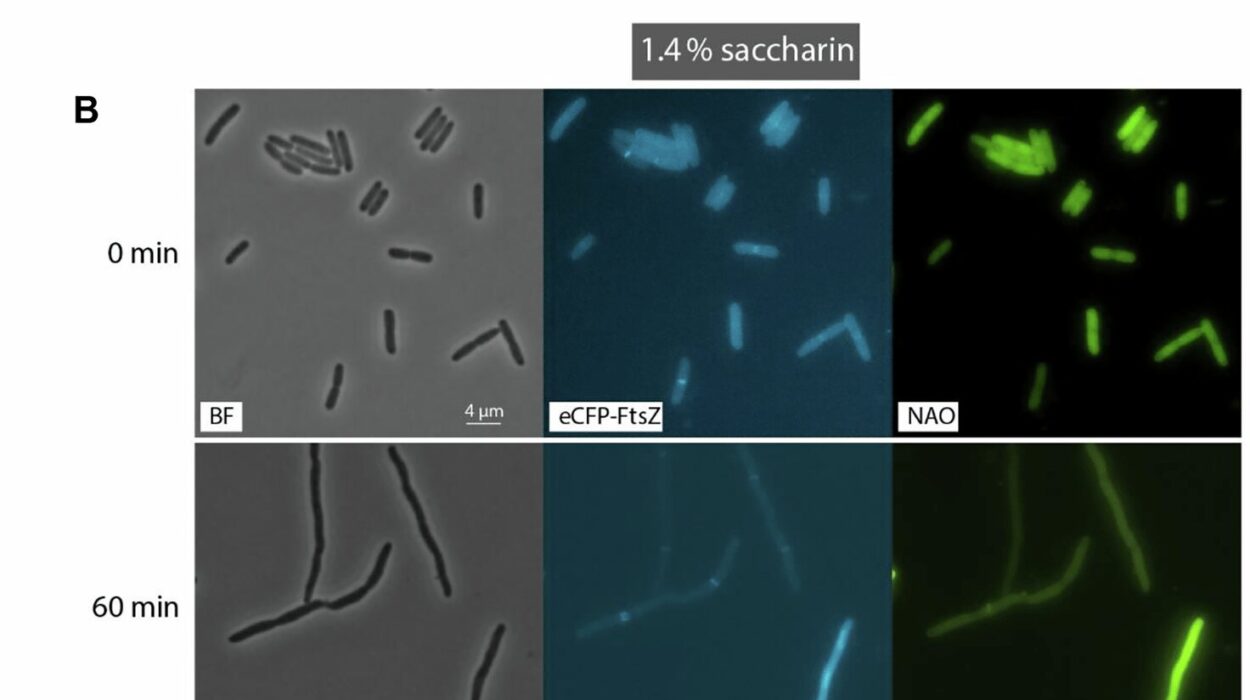In the vast, pulsing blue of Earth’s oceans, few creatures are as haunting, beautiful, and alien as the jellyfish. Their bodies glow like lanterns, their movements like underwater ballet. Yet beneath this fragile elegance lies one of the greatest mysteries in biology: jellyfish have no brains. No hearts. No bones. No centralized nervous systems. Still, they are alive, and have been for over 500 million years—far longer than dinosaurs, trees, or mammals. They drift, sting, eat, reproduce, and thrive in nearly every marine habitat on Earth. How is this even possible?
This question, seemingly simple, leads into a breathtaking exploration of biology stripped to its essence. Jellyfish are reminders that life, at its core, does not need to follow our rules. They demonstrate that intelligence does not always require neurons in a skull, and that survival can come through simplicity rather than complexity. To understand how jellyfish function without the organs we take for granted is to peer into the raw, elegant mechanisms of evolution itself.
The Anatomy of a Transparent Survivor
To understand how jellyfish survive, we must first look at how they’re built. At a glance, they seem impossibly fragile—more water than flesh. In fact, jellyfish bodies are composed of over 95 percent water, held together by a thin matrix of cells and proteins. Their structure is a gelatinous bell called the medusa, from which trail stinging tentacles, oral arms, and internal canals.
Despite lacking a skeleton, jellyfish hold their shape using mesoglea—a thick, jelly-like substance that fills the space between their two thin layers of tissue: the epidermis on the outside, and the gastrodermis lining their gut. The mesoglea provides buoyancy and gives jellyfish their ghostly translucence.
But what’s most remarkable is what jellyfish lack. They have no centralized brain to process information, no heart to pump blood, and no lungs to breathe. They possess no kidneys, no bones, and no complex digestive system. Even so, they manage to sense, move, feed, and reproduce. The very fact of their survival tells us that there is more than one way to be alive.
Nerve Nets and Radial Logic
Without a brain, how do jellyfish coordinate movement or respond to stimuli? The answer lies in a decentralized nervous system known as a nerve net. Unlike the human nervous system, which routes all information through a spinal cord and brain, a nerve net is a loose mesh of interconnected neurons spread throughout the jellyfish’s body, especially concentrated around the edges of the bell.
These neurons allow jellyfish to detect changes in their environment—light, touch, orientation—and respond accordingly. When touched, the nerve net sends signals directly to muscle-like cells in the bell, triggering contractions that propel the jellyfish forward. These movements are rhythmic, almost hypnotic, powered by a pacemaker-like set of cells in a structure called the rhopalium.
Jellyfish don’t “think” in any human sense. They don’t form memories or experience emotions. But they do exhibit coordinated behavior. Some species can navigate vertically to chase prey or avoid predators. Others adjust their pulsing frequency in response to water conditions. Their actions are not random—they are guided by a distributed logic, built into the very fabric of their decentralized bodies.
A Heartless Circulation System
Jellyfish survive without a heart because they have no blood. There is no need to pump nutrients through a complex vascular system when diffusion will do. Instead of a circulatory system, jellyfish rely on the simplicity of osmosis and diffusion to transport oxygen, nutrients, and waste products across their cells.
Their bodies are so thin and water-rich that oxygen diffuses directly from the surrounding seawater into their cells. This process is facilitated by their large surface-area-to-volume ratio, which maximizes contact with the water. Similarly, nutrients absorbed from food move through a central cavity and are dispersed by ciliary motion—a kind of cellular stirring mechanism—rather than being pumped through veins.
This efficiency is made possible by their aquatic environment. Jellyfish would not survive on land, where gravity and distance would make diffusion impossible. But in water, where buoyancy eliminates the need for structural support and where diffusion can occur at scale, their simplicity becomes an asset. Evolution, it seems, has tailored them perfectly to their niche.
Feeding Without a Mouth as We Know It
Jellyfish may appear passive, but they are effective hunters. Their tentacles are lined with thousands of specialized stinging cells called cnidocytes, each containing a microscopic harpoon-like structure called a nematocyst. When triggered—often by the slightest brush of another creature—these nematocysts explode outward, injecting venom into the prey and entangling it in sticky threads.
Once immobilized, the prey—typically small fish, plankton, or crustaceans—is transferred to the jellyfish’s central mouth, located on the underside of the bell. This mouth opens into a primitive stomach, or gastrovascular cavity, where digestion begins. Enzymes break down the food, and nutrients are absorbed directly by surrounding cells. Waste is expelled back out the same opening.
This crude but effective one-hole digestive system is characteristic of many simple animals. What jellyfish lack in anatomical sophistication, they compensate for with biological elegance. Their venom is potent, their digestion efficient, and their prey capture strategy astonishingly advanced for a creature without a brain.
Seeing Without Eyes
How do jellyfish perceive the world? They cannot “see” in the way humans do, but many jellyfish possess light-sensing organs that allow them to detect brightness and shadow. Some species have specialized structures known as ocelli, which are rudimentary eyes capable of sensing light intensity.
The box jellyfish, among the most advanced members of the cnidarian family, goes even further. It possesses clusters of eyes—24 in total—organized into four rhopalia. Remarkably, some of these eyes contain lenses, retinas, and even corneal structures, allowing for a surprising level of visual processing. Even more extraordinary, this visual system functions in the absence of a brain.
How does vision work without central processing? In box jellies, local reflexes—perhaps aided by autonomous sensory circuits—allow these creatures to orient toward mangroves, avoid obstacles, and maintain position in currents. They may not think about what they see, but they can react with startling precision. It is, once again, a kind of intelligence without thought.
Reproduction Without Complexity
Jellyfish display a bewildering array of reproductive strategies, many of which involve both sexual and asexual phases. Most species have a life cycle that alternates between two main forms: the sessile polyp and the free-swimming medusa. The polyp is a small, stalk-like organism that anchors to a surface and buds off genetically identical medusae. These medusae, the familiar jellyfish form, can reproduce sexually by releasing eggs and sperm into the water.
Fertilized eggs develop into free-swimming larvae, which eventually settle and grow into new polyps. This dual-mode reproduction ensures that jellyfish can colonize new habitats through swimming and endure harsh conditions by remaining anchored and dormant for extended periods.
Some species, like the astonishing Turritopsis dohrnii—the so-called “immortal jellyfish”—can even reverse their development, reverting from adult medusa back to polyp stage in response to stress or injury. This form of biological time travel allows them to escape death, essentially resetting their life cycle indefinitely. It is one of the most extraordinary adaptations in the animal kingdom and a subject of ongoing research in aging and regeneration.
Evolution’s Minimalist Masterpiece
The simplicity of the jellyfish is not a flaw; it is their greatest strength. In evolutionary terms, jellyfish are among the oldest animals on Earth. Their lineage dates back to the Ediacaran period, more than 500 million years ago, and possibly even earlier. They have survived every mass extinction event. Their minimalist design, honed over eons, has proven incredibly resilient.
Because they do not rely on complex organs, jellyfish are remarkably adaptable to environmental changes. They can survive in low-oxygen waters, tolerate wide temperature ranges, and thrive in both shallow coastal zones and the deepest abyssal trenches. Their reproductive versatility enables population booms under favorable conditions, leading to jellyfish “blooms” that can stretch for kilometers and disrupt entire ecosystems.
In some areas, overfishing and climate change have actually favored jellyfish by removing predators and competitors. This has led some scientists to warn of a “jellyfish takeover”—a scenario where collapsing ecosystems are replaced by gelatinous dominance. Whether this is hyperbole or prescience remains to be seen. But what is certain is that jellyfish will likely outlast us. They already have.
Intelligence Without a Brain?
When we think of intelligence, we often think of brainpower: neurons firing, memories stored, decisions made. But jellyfish challenge that assumption. Their decentralized nerve nets and behavioral complexity suggest an alternate form of intelligence—one that is embodied, local, and reflexive rather than abstract and centralized.
They cannot reason, but they can adapt. They cannot think, but they can learn at a basic level. Some experiments suggest habituation—where jellyfish stop responding to repeated, non-harmful stimuli—indicating a rudimentary form of learning. Others show that jellyfish can navigate complex environments, coordinate their pulsing patterns, and respond dynamically to changes in water flow.
These behaviors, while not conscious in the human sense, raise profound questions about what it means to be intelligent. Is intelligence only about neurons, or can it emerge from simpler, distributed systems? Can there be a spectrum of cognition, with jellyfish at one end and humans at the other, rather than a strict divide between “smart” and “dumb”?
Lessons from the Brainless
Jellyfish remind us that life is not about complexity for its own sake. It is about fitness to environment. Their way of being is not lesser; it is different—an alternative branch of the evolutionary experiment. In their bodies we see a form of biological efficiency so refined that it needs no central command. In their rhythms, we hear the echoes of ancient seas.
They challenge our anthropocentric ideas about what life should look like. We marvel at their alien beauty, and we are startled by their success. As scientists decode the genetic and molecular secrets of jellyfish, from their regenerative powers to their venom chemistry, we are beginning to appreciate that even the simplest organisms harbor profound mysteries.
In a time when our planet is under increasing stress, jellyfish also serve as indicators of environmental change. Their rising numbers in some regions warn us of shifting ocean dynamics—of warming waters, deoxygenation, and imbalance. Yet they also offer hope. If such ancient creatures can endure, adapt, and flourish, perhaps there are lessons in their resilience for us too.
A Floating Legacy
To look into the eyes of a jellyfish—if you can find them—is to gaze across half a billion years of evolutionary time. These translucent survivors drift not just through oceans, but through epochs. They have seen continents shift, climates oscillate, and empires rise and fall—all without a brain to remember it.
And yet, perhaps they remember in other ways—in their genes, in their forms, in the patterns of their movements handed down through the ages. Their simplicity is deceptive, their survival a triumph of form over ornament.
As we dive deeper into the biology of jellyfish, we are reminded that there is more than one path to survival, more than one way to know the world. The jellyfish’s silent wisdom is written not in words or thoughts, but in the graceful pulse of a bell, the twitch of a stinging tentacle, the quiet endurance of a creature that has outlived extinction itself.
We may have brains and hearts, but the jellyfish has something older: a blueprint for life distilled to its essence. And in that simplicity, there is an elegance we are only just beginning to understand.






